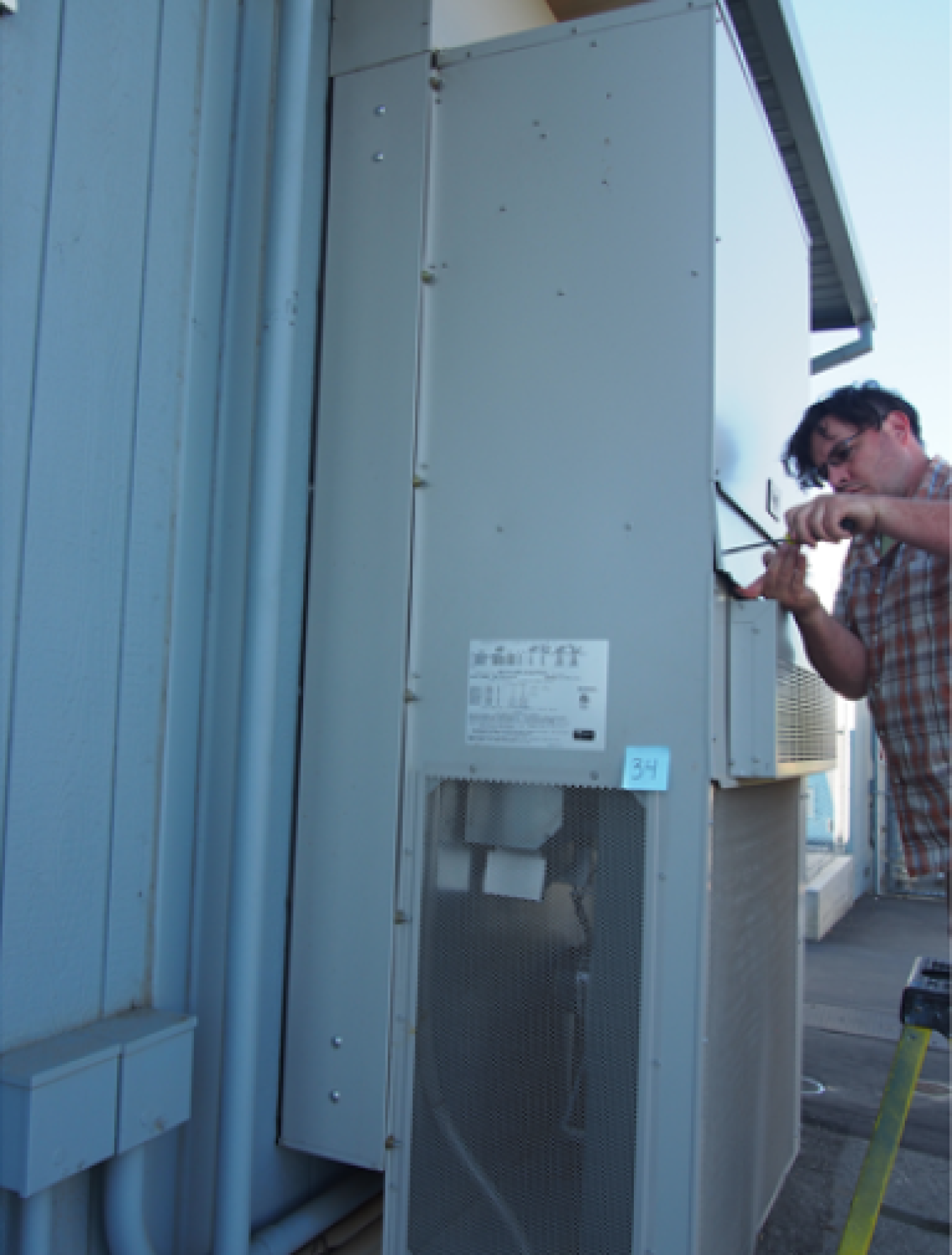
There are ways to retrofit existing HVAC systems to improve indoor air quality and save energy. High-impact retrofits include installing air economizers, heat and energy recovery ventilation, demand control ventilation, and building automation systems. There are other energy-efficiency upgrades that can help to reduce the cost of providing outdoor air for ventilation.
Installing air economizers can help ventilate and cool a building in an energy-efficient way. Air economizers draw in outdoor air in order to meet the thermostat setpoint without using the air conditioner. This process is known as “free cooling.” The economizer controllers determine when the outdoor environment is favorable and commence the free cooling process. Economizers typically operate at night when outdoor air is cooler than indoor air and use significantly less energy compared to air conditioning. Air economizers also require sophisticated control systems to operate efficiently. Routine maintenance is also recommended given that dampers can get stuck open and waste a lot of energy.
Energy-efficient ventilation systems also incorporate energy recovery ventilation (ERV). Ventilation systems without ERV functions waste energy by exhausting the cooled or heated air from the building. As a result, the space conditioning systems use more energy to re-heat or cool the fresh air brought in from outside. ERVs transfer the energy between the outdoor supply air and the exhaust air streams. This prevents the ventilation system from wasting energy and can increase efficiency substantially.
Demand control ventilation (DCV) systems use occupancy or CO2 sensors to adjust the ventilation rate automatically in response to changing occupancy rates. DCV can maintain air quality while saving energy during low occupancy periods. “Disabling” or “enabling” DCV can be accomplished simply by changing setpoints using a building automation system (BAS).
Implementing or modernizing an existing BAS is a great investment to get better control over HVAC operation. It allows monitoring of HVAC performance to be accomplished more easily. Getting a system in place gives facility staff the tools needed to make quick adjustments to ventilation, such as in the case of wildfire smoke to limit the outdoor air intake, or to monitor pressure drop so that air filters can be changed according to loading capacity.
Featured Better Buildings Solutions
- River Trails Middle School in Mt. Prospect, Illinois, implemented an upgrade of the HVAC controls and retro-commissioned the building systems. The project resulted in a 27 percent annual energy savings and an $18,900 annual cost savings.
- Mt. Washington Elementary School in Kentucky was selected by the Bullitt County Public School District to undergo a major renovation of the HVAC system, lighting, and indoor air quality. The 1.5-year project resulted in an annual energy savings of 32 percent and annual cost savings of $28,000.
- Vista Peak Preparatory in Aurora, Colorado, was selected by the Aurora Public School District to undergo a 14-month recommissioning of the HVAC system to maximize energy savings potential. The project is estimated to realize a 20 percent EUI reduction and an annual energy cost savings of $54,000.
Additional Resources
- NREL Advanced Energy Retrofit Guide provides practical ways to improve energy efficiency, from existing building commissioning to whole-building retrofit.
- New Buildings Institute Zero Net Energy School Retrofit Trainings are recorded events (webinars and workshops) on how existing K-12 school and community college buildings in California achieved zero net energy performance.
- EPA Energy Savings Plus Health: Indoor Air Quality Guidelines for School Building Upgrades recommends ways to manage energy-efficiency upgrades and indoor air quality in schools.

